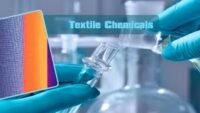Dyeing is the most common popular words in garments & textile industry. Now a days without dyeing we cannot imagine wearing in cloth. Dyeing is the process of adding color to fiber, yarns & fabric. Dyeing is the special solution of dye & chemical materials for a particular product. Dyeing has been changed day by day after change the world. Basically, dyeing is the complex process. Dyeing uses not only for textile industry but also uses in garments industry. Garments industry dyeing apply after making the garments & Textile industry dyeing uses in fiber, yarn & fabric. Really, it is very interesting that many types of dye use in textile & garments industry.
There are three categories:
- Cellulose fiber dye.
- Protein fibers dye.
- Synthetic fibers dye.
There are many class of dye in the following.
- Reactive dye:

Reactive dye is common dye in garments & textile industry. Normally, it is very highly colored organic substance. Reactive dye uses a chromophore that contains a substituent that is quite capable of a direct reaction with a fiber substrate. The dyestuff forms a chemical link with the fiber. It is very good fastness properties. Normally, reactive dyes apply in cotton, linen, viscose, wool & Silk.
- Disperse Dye

Disperse dye is also very common dye in garments & textile industry. Disperse dye is originally developed for the dyeing for cellulose acetate & water insoluble. Normally, it can be used in for dyeing nylon, cellulose acetate, polyester & acrylic fiber. Normally, this dyeing temperature is high & more pressure for dye bath. It is good for fastness properties.
- Direct Dye

Direct dye is commonly used on cotton fiber or cotton fabric in garments & textile industry. It is also popular dye in this sector. Generally, this dye mixed in all purpose dyes with Acid dyes. This dye on cotton fabric cannot bright that the reason it can be mix with others. The wash fastness of this dye is not very good but light fastness is very good. This fastness properties can be improved by after treatment.
- Basic dye

The most common synthetic dye is basic dye. In the initial stage that nature is to act as bases and is actually aniline dyes. Initially their color base prevents them from being water soluble. They can be made so with the base being converted into a salt. At the chemical level, basic dyes are typically cationic or positively charged. It reacts with acidic groups or mordarants in the fiber. It is very good fastness properties of acrylic fibers & good brightness.
- Acid dye

Normally, acid dye is used for protein fibers & it is depend on fabric type .Acid dye apply on wool, silk,& nylon. Its looks like a strong caustic soda. But, in reality these dyes are non-caustic acids and sometimes also non-toxics. In fact in some cases mild acids like vinegar are used in the dyeing process. It fastness properties focus on fabric nature.
- Sulphur dye.

Sulphur dye is mainly use for cellulose fibers. It can be used for dyeing staple fibers & yarns. It is luster grains & makes a black shade with having a slight reddish or greenish impact. It is used for cotton, viscos & rayon. It properties have good light fastness.
- Vat dye

Vat dye is very popular in textile & garments industry. Normally, vat dye based on original indigo dye of natural. It is very ancient class of dye. Now a dyes, indigo dyes are manufactured synthetically. There are different types of fibers can be washed by vat dye & it is used in cotton & wool. Tie dyeing is one kind of direct dye opposite of vat dyeing.
- Azoic Dye

Azoic dye is also called Nepthol dye. This AZO consist a group called AZO group. These groups made by nitrogen & atoms.It is connect atomic ring components. This AZO dye is found mainly three color likes as red, brown & yellow.
- Oxidation dye

Oxidation dye is the aromatic compound chemical used for textile industry. Oxidation dye is generally colorless & low molecular weight product. In the initial stage it is very popular colorant materials. It also base on hair dye. Oxidation dye found right now permanent, semi permanent. The chemical uses diamine, Aminophenols & Phenols.
- Optical dye or Fluorescent

Optical dye is the brighter dye of cloth. In textile industry now demand optical brightener for fiber & Yarns. The capacity to absorb light in the violet & ultraviolet region of the electromagnetic spectrum. Optical brighteners have effectively replaced blues that was earlier used to produce the same effect.
- Solvent Dye

Solvent dye are the class of dye into soluble in the solvent of organic nature. It is generally solvent as a solution. Many of the solvent dyes are generally the AZO dye. One of the prominent applications of solvent dye is the Fuel dye.
Md.Mahbub-Ul Islam
RMG Consultant & Researcher.
mahbub.islam54@gmail.com






Very interesting post.
Thanks
Nice Post Sir
Thanks.
TQ
nice post.
I wanted to thank you for this great read!!
I undoubtedly loving every little touch of it I have you bookmarked to check out new material you post.
Thanks.